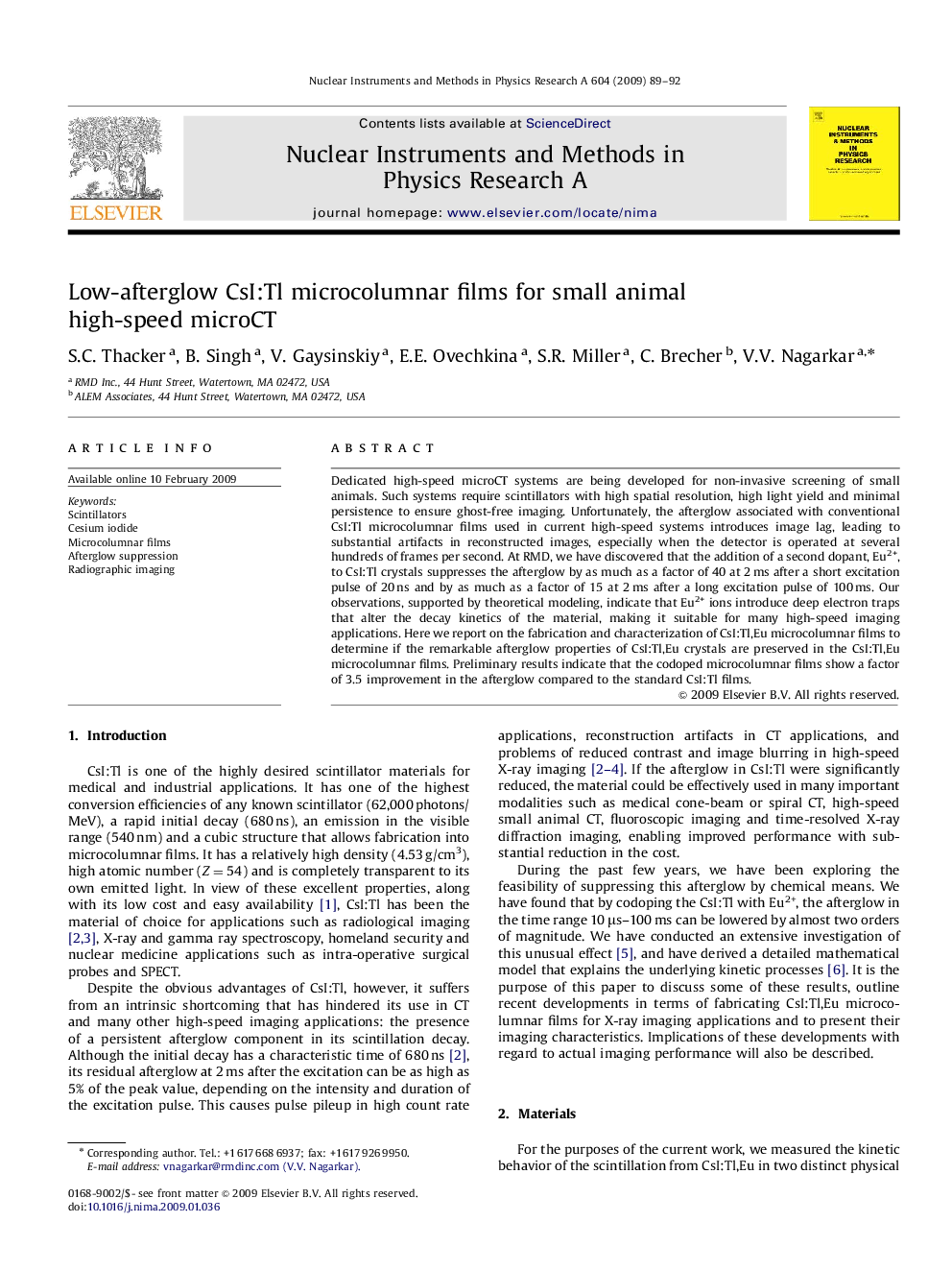| Article ID | Journal | Published Year | Pages | File Type |
|---|---|---|---|---|
| 1827821 | Nuclear Instruments and Methods in Physics Research Section A: Accelerators, Spectrometers, Detectors and Associated Equipment | 2009 | 4 Pages |
Dedicated high-speed microCT systems are being developed for non-invasive screening of small animals. Such systems require scintillators with high spatial resolution, high light yield and minimal persistence to ensure ghost-free imaging. Unfortunately, the afterglow associated with conventional CsI:Tl microcolumnar films used in current high-speed systems introduces image lag, leading to substantial artifacts in reconstructed images, especially when the detector is operated at several hundreds of frames per second. At RMD, we have discovered that the addition of a second dopant, Eu2+, to CsI:Tl crystals suppresses the afterglow by as much as a factor of 40 at 2 ms after a short excitation pulse of 20 ns and by as much as a factor of 15 at 2 ms after a long excitation pulse of 100 ms. Our observations, supported by theoretical modeling, indicate that Eu2+ ions introduce deep electron traps that alter the decay kinetics of the material, making it suitable for many high-speed imaging applications. Here we report on the fabrication and characterization of CsI:Tl,Eu microcolumnar films to determine if the remarkable afterglow properties of CsI:Tl,Eu crystals are preserved in the CsI:Tl,Eu microcolumnar films. Preliminary results indicate that the codoped microcolumnar films show a factor of 3.5 improvement in the afterglow compared to the standard CsI:Tl films.
